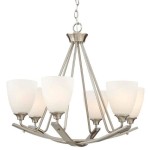```html
Indoor Plant Wall Decor Ideas
Integrating greenery into interior spaces has become increasingly popular, moving beyond traditional potted plants on shelves and windowsills. Indoor plant walls, a form of living art, offer a dynamic and visually appealing method to enhance the aesthetic and environmental quality of a space. These vertical gardens provide a multitude of benefits, including improved air quality, reduced stress levels, and an enhanced connection with nature.
Indoor plant walls are versatile and can be adapted to various interior styles, from minimalist to bohemian. The design possibilities are extensive, ranging from small, framed succulent arrangements to large-scale green walls that cover entire surfaces. The selection of plants, framing materials, and irrigation systems significantly impact the final appearance and maintenance requirements of the plant wall.
Selecting the Right Location and Structure
The success of an indoor plant wall hinges on selecting an appropriate location within the interior space. Light exposure is a crucial factor. Most indoor plants require adequate indirect sunlight to thrive. Assess the amount of natural light the proposed wall receives throughout the day. If natural light is insufficient, supplemental grow lights may be necessary to ensure the plants' health and vitality.
Furthermore, consider the wall's structural integrity. The weight of the plant wall system, including the plants, soil, and irrigation, can be substantial. Ensure the wall is capable of supporting the added load. In some cases, reinforcing the wall may be required, especially for larger and more elaborate installations. The location should also be easily accessible for maintenance tasks such as watering, pruning, and pest control.
The structure of the plant wall itself is another essential consideration. Several options are available, each with its own advantages and disadvantages. Modular systems, which consist of individual planters or pockets that attach to a frame, offer flexibility and ease of installation. These systems are typically pre-fabricated and designed for easy maintenance. Alternatively, custom-built structures can be created to perfectly fit the space and accommodate specific design requirements. These custom systems often involve a more complex installation process but allow for greater personalization.
Another option is using repurposed materials such as pallets or shelving units to create a rustic and eco-friendly plant wall. This approach often requires more creativity and DIY skills but can be a cost-effective way to add greenery to the interior. Regardless of the chosen structure, ensure it provides adequate drainage and support for the plants.
Choosing Plants for Indoor Plant Walls
The selection of plants is paramount to the aesthetic appeal and longevity of the indoor plant wall. Consider the environmental conditions of the space, including light levels, humidity, and temperature. Choose plants that are well-suited to these conditions to minimize maintenance and maximize their chances of thriving.
Low-light plants, such as ferns, pothos, and snake plants, are ideal for areas with limited natural light. These plants are relatively low-maintenance and can tolerate less-than-ideal conditions. For areas with more sunlight, consider using succulents, herbs, or flowering plants. Succulents are well-suited to dry conditions and require minimal watering. Herbs, such as mint and basil, add a fragrant element to the plant wall and can be harvested for culinary use. Flowering plants, such as orchids and bromeliads, provide a vibrant splash of color and can create a visually stunning display.
When selecting plants, consider their growth habits and ultimate size. Choose plants that will stay relatively compact and not overcrowd the wall. Regular pruning may be necessary to maintain the desired shape and prevent plants from outgrowing their space. Also, consider the texture and color of the foliage. Mixing different textures and colors can add depth and visual interest to the plant wall.
Furthermore, consider incorporating plants with air-purifying properties. Certain plants, such as spider plants and peace lilies, are known to remove toxins from the air, improving indoor air quality. This adds an extra layer of benefit to the plant wall, enhancing both the aesthetic and environmental quality of the space.
Irrigation and Maintenance Techniques
Proper irrigation is essential for the health and longevity of the indoor plant wall. Several irrigation systems are available, ranging from manual watering to automated drip systems. Manual watering involves using a watering can or sprayer to directly water the plants. This method requires regular monitoring and can be time-consuming, especially for larger plant walls.
Automated drip systems offer a more convenient and efficient way to water the plants. These systems deliver water directly to the roots of the plants through a network of tubing and emitters. The system can be programmed to water the plants at regular intervals, ensuring consistent hydration. While automated drip systems require an initial investment, they can save time and effort in the long run.
In addition to watering, regular maintenance is crucial for the health and appearance of the plant wall. This includes pruning, fertilizing, and pest control. Pruning involves removing dead or damaged leaves and stems to maintain the desired shape and prevent the spread of disease. Fertilizing provides the plants with essential nutrients to promote healthy growth.
Pest control is an important aspect of plant wall maintenance. Regularly inspect the plants for signs of pests, such as aphids, mealybugs, or spider mites. Treat any infestations promptly to prevent them from spreading to other plants. Use organic pest control methods whenever possible to minimize the use of harsh chemicals.
The frequency of maintenance tasks will depend on the type of plants used and the environmental conditions of the space. However, a general guideline is to inspect the plant wall at least once a week and perform any necessary maintenance tasks. With proper care and attention, an indoor plant wall can thrive for many years, adding beauty and vibrancy to the interior space.
Beyond the practical aspects, think about the overall design and aesthetic. Consider the color palette of the room and choose plants that complement the existing décor. The plant wall can be a focal point or a subtle accent, depending on the desired effect. Experiment with different textures and heights to create a visually dynamic display. Adding decorative elements, such as driftwood or stones, can further enhance the aesthetic appeal of the plant wall.
Creating an indoor plant wall is a rewarding project that brings the beauty of nature indoors. With careful planning and attention to detail, it can transform any space into a vibrant and inviting environment. The key is to choose the right plants, provide adequate light and water, and perform regular maintenance to ensure the plant wall thrives for years to come.
```
28 Plant Wall Art Ideas For Home Décor

4 Plant Wall Decor Ideas For Your Home

10 Ideas For Decorating Your Walls With Plants

28 Plant Wall Art Ideas For Home Décor

23 Gorgeous Plant Wall Ideas For Small And Big Spaces

41 Awesome Plant Wall Ideas How To Build A Diy

8 Easy Diy Plant Wall Ideas For Your Indoor Homemydesign

Money Plant Wall Hanging Decoration Ideas Plants Indoor Green Decor

14 Urban Jungle Interior Design Ideas For Your Home Extra Space Storage

How To Make Money Plants Wall Hanging Decor Indoor Decoration Ideas Green
Related Posts







